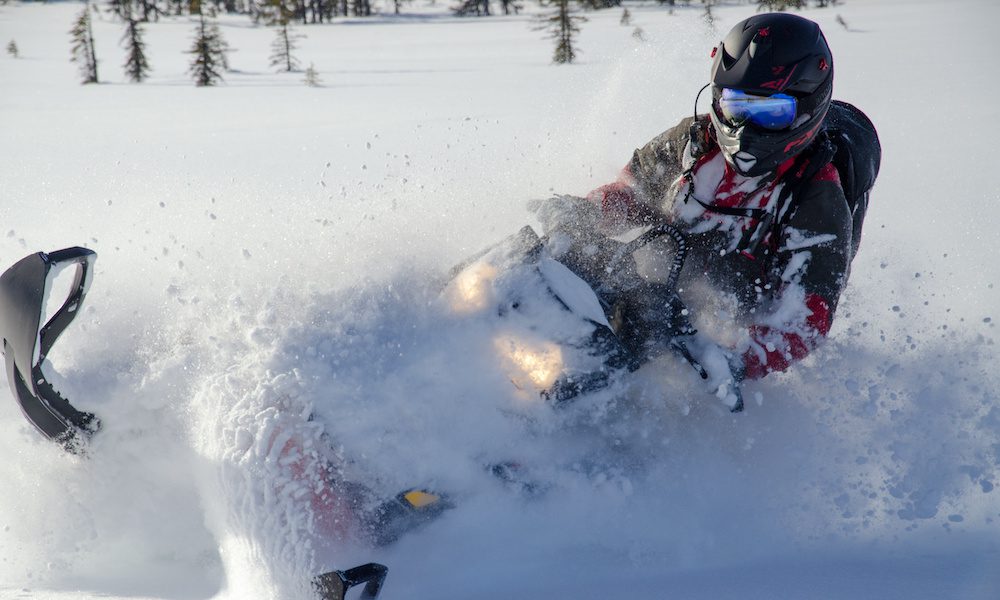Do I Need Snowmobile Insurance in Central New York?
March 7th, 2025
2 min read

When winter arrives in Central New York, lake effect snow transforms our landscape. As cold Canadian air sweeps across the Great Lakes, it creates conditions for nor'easters, snow squalls, and whiteouts that turn our region into a winter recreation area.
While some residents dream of warmer climates during these conditions, others see opportunity. If you're considering joining the more than 100,000 New York snowmobile owners registered with the Department of Motor Vehicles, you likely have questions about insurance requirements.
At the Horan insurance agency, we aim to provide straightforward information about snowmobile insurance requirements in New York State. As a local independent agency serving Central New York, we share insights about coverage options while helping identify solutions that address your insurance requirements.
In this article, we'll explore New York State's snowmobile insurance requirements, coverage options beyond the minimum limits, and factors that influence insurance costs.
Understanding New York's Snowmobile Insurance Requirements
While New York State doesn't classify snowmobiles as motor vehicles, specific insurance requirements still apply. If you plan to operate your snowmobile on any roadway or highway shoulder, you'll need insurance that meets state minimum requirements. This coverage is also necessary for registration with the Department of Motor Vehicles.
New York State Parks law establishes these current minimum liability limits:
- $10,000 for injury to one person
- $20,000 for injury to two or more people
- $5,000 for property damage from a single incident
These minimum requirements may prove insufficient for serious accidents. Medical costs from injuries can exceed these limits, potentially leaving you responsible for additional expenses.
Why Central New York Weather Conditions Matter
Our region's distinctive winter weather patterns create various riding conditions. Lake effect snow can reduce visibility. Temperature changes can alter trail conditions, and winter storms may increase distance from available shelter.
These weather factors make insurance coverage considerations particularly relevant for local riders who encounter varying conditions throughout the season.
Coverage Options That Address Common Risks
When considering snowmobile insurance in Central New York, basic liability coverage addresses only part of your potential risks. Many riders learn about coverage limitations after incidents occur.
Physical Damage Coverage
Your snowmobile represents a substantial purchase, whether it's a $3,000 used model or a new $15,000 premium sled. Physical damage coverage includes collision coverage for accidents with objects or other vehicles, and comprehensive coverage for:
- Theft from storage locations
- Fire damage in garages or storage units
- Vandalism at trail parking areas
- Storm damage from fallen trees
- Flooding during winter thaws
For more on this subject, be sure to read our detailed comparison between comprehensive and collision coverage.
Protection Against Uninsured Riders
Trail encounters with uninsured or underinsured riders create particular challenges in New York. While state law requires insurance for road crossings, not every rider maintains coverage. Uninsured/underinsured coverage can address medical expenses after accidents with riders who lack sufficient insurance.
Equipment and Accessories Coverage
Modern snowmobiling involves gear investment beyond the sled itself. Standard policies often have limitations regarding:
- DOT-approved helmets and specialized eyewear
- Protective clothing and boots
- GPS units and communication devices
- Modifications and upgrades
- Transport trailers and loading equipment
- Personal items carried while riding
Understanding Insurance Costs and Coverage Timing
Several elements influence snowmobile insurance premiums:
- Coverage types and limits selected
- Snowmobile make, model, and value
- Riding experience and history
- Storage location and security measures
- Annual usage estimates
Annual premiums typically range from $75 to $250, depending on these factors. While seasonal coverage might appear cost-effective, some insurance companies charge cancellation fees that can make multiple starts and stops more expensive than maintaining year-round coverage.
Year-round coverage addresses off-season situations like storage damage or transport incidents while eliminating coverage gaps.
Creating a Snowmobile Insurance Strategy That Works
Deciding to join Central New York's active snowmobile community brings excitement but also uncertainty about insurance decisions. You might have concerns about coverage selection or discover limitations in basic policies.
The Horan insurance agency helps Central New York riders understand their snowmobile insurance options. As an independent agency, we can share information about different carriers' approaches to snowmobile coverage while identifying solutions that align with your insurance requirements.
Click the Get a Quote button below to explore snowmobile insurance options with an agency familiar with both local riding conditions and coverage considerations.
Daniel is an accomplished content creator. He has been working in publishing for almost two decades. Horan Companies hired Daniel as its content manager in November 2022. The agency entrusted its messaging to him. Since then, Daniel has written insurance articles, service pages, PDF guides, and more. All in an effort to educate CNY readers. He's helping them understand the world of insurance so they can make informed decisions.
Topics:







